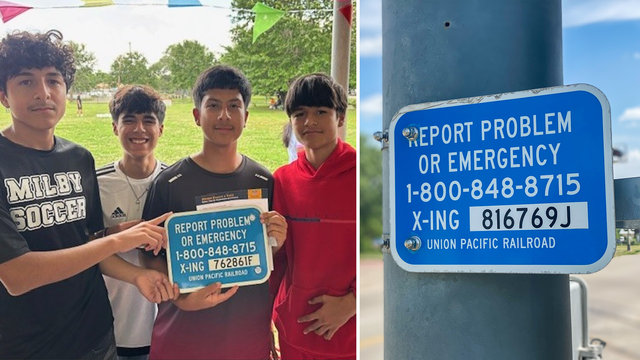Committed to Communities, Employees and Customers
Report Rail-Related Emergencies
In an emergency - stalled vehicle on tracks, hazardous materials, criminal activity, or fire - call our emergency helpline immediately.
For non-emergency matters, contact us online.
- Featured Links card
Dial 888-877-7267
Dial 00-1-881-877-726
Dial 7-1-1 for Telecommunications Relay Services
Contact us online to report blocked crossings, encampments, illegal dumping or vegetation concerns.

Do you know what to do if you're stuck on a railroad crossing?
Blue and white signs save lives.



